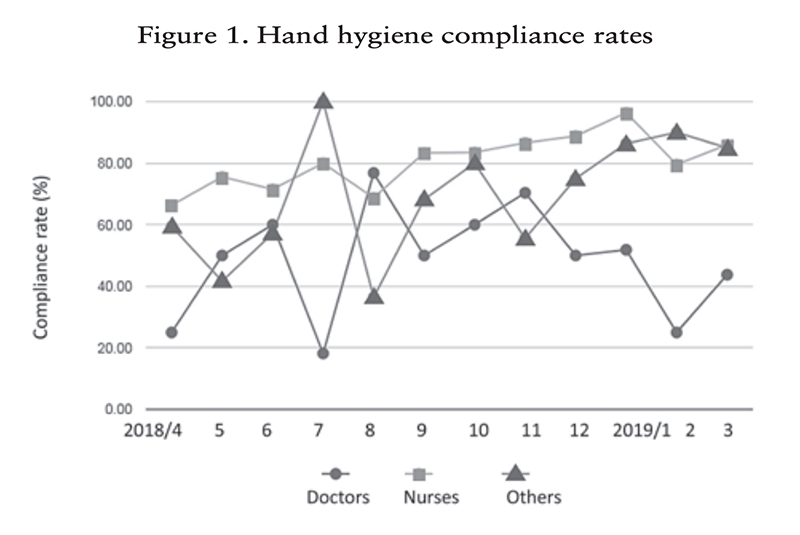Annual Report 2018
Department of Safety Managment, Office of Infection Control and Prevention
Keiji Okinaka, Asako Hashimoto, Nobuo Mochizuki, Takuya Yamaguchi
Introduction
The Office of Infection Control and Prevention was established in October 2016. The objective of our office is to promote the practice of hospital infection control in order to reduce transmission of communicable diseases among patients, health care workers, and visitors. Our office also promotes antimicrobial stewardship.
The Team and What We Do
Our missions are:
- Development of infection control policies and in-hospital guidelines
- Managing the surveillance system of healthcare associated with infections and drug resistant bacteria in order to prevent outbreaks of infectious diseases
- Maintenance of manuals regarding infection control and antimicrobial stewardship
- Inspecting and improving quality of hospital environment using ward rounds
- Inspecting and improving compliance with hand hygiene and other infection control measures using ward rounds
- Offering consulting services regarding infection control problems
- Preventing and managing needle stick injuries
- Vaccinations for staff with insufficient protective immunity
- Planning to provide employee education and educational campaigns for the purpose of promoting infection control and antimicrobial stewardship
- Planning conferences among regional hospitals to promote the improvement of infection control in each hospital
- Promoting antimicrobial stewardship
- Inspecting and promoting proper disposal of medical waste
Research activities
Ms. Hashimoto presented at the domestic annual meeting about the handling cost of an influenza outbreak.
Education
We have conducted staff education on various infection control practices, which includes lectures based on up-to-date evidence and on-site feedback regarding the results of ward rounds. This year, we held four lectures on the basic principles of infection control, influenza, the antimicrobial stewardship team and antimicrobial resistance.
Future prospects
We implemented direct observation methodologies to evaluate health workers' hand hygiene compliance. By using these data, we created an action plan for improvement in compliance with hand hygiene. As a result, the compliance rate among nurses and other medical staff increased more than 80%(Figure. 1). However, the compliance rate among doctors is still poor. We plan to work on improving doctors' hand hygiene compliance.
We keep aiming to increase the isolation precautions compliance rate and creating safe patient care through appropriate infection control measures. We also promote antimicrobial stewardship in order to aim for a low antimicrobial resistance rate and safe medical environment.
Figure 1. Hand hygiene compliance rates


